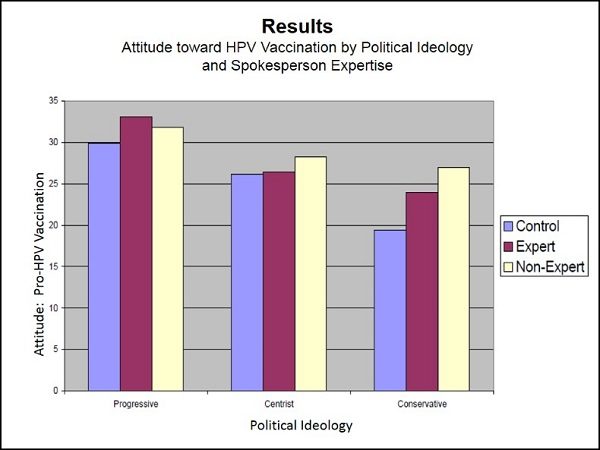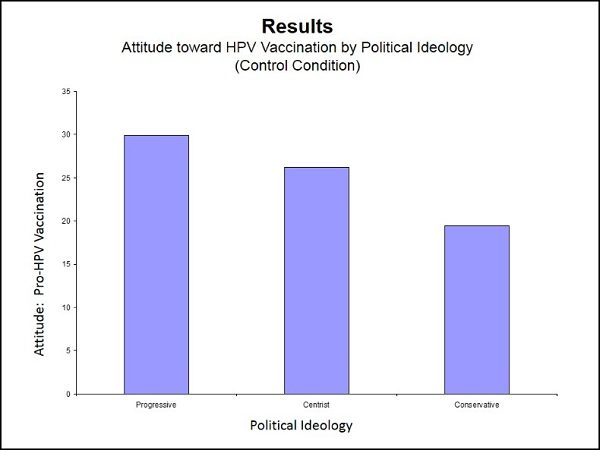Home » Public Relations
Category Archives: Public Relations
Can you punctuate a quote?
How good are you at quotation punctuation?
Everyone who writes news releases for a living knows the value of quotations.
But surprisingly few people graduating from college today can actually punctuate sentences with quotations in them.
Can you?
Here are 10 punctuation challenges. A pro should be able to get all 10 correct.
(1) im proud to be an american citizen said afrim defiantly
(2) our company was founded on the principles of quality and value he said
(3) what do you mean said Johnson raising an eyebrow
(4) responding to the question CEO robert johnson said theres no evidence linking my company to those accidents
(5) you look like you like pizza said luigi you came to the right place
(6) the only difference between my generic product and theirs said johnson is the name on the label
(7) i want you to read the raven a poem by edgar allen poe said the professor
(8) the professor turned suddenly and said I want to make sure you read the raven
(9) have any of you ever read the raven he asked
(10) in a long quotation said professor gans find a way to let the reader know who is speaking as early as possible the professor drank some amber liquid from a flask he had hidden in his pocket and continued no later than the end of the first sentence he said
How did you do?
To download the quiz and answers in pdf form, click here.
Reducing Risky Behavior
Risk Communication Can Be Risky
Environmental Safety and Public Health Policy-Makers Often Make Matters Worse
Communication of science-based information to the general public…particularly health-related information…is a well-studied field.
This may be because it is so often done so poorly.
Many public behavior interventions, especially those based on intuition, “common sense,” political persuasion or religious belief, tend to focus on presenting a rational, logical argument for complying with a specific behavioral request.
Researcher Timothy D. Wilson cites “D.A.R.E.” and “Scared Straight” interventions…famous and widely adopted programs intended to reduce crime and drug use among young people…as examples of programs that “make perfect sense, but… are perfectly wrong, doing more harm than good. It is no exaggeration to say that commonsense interventions [such as these] have prolonged stress, raised the crime rate, increased drug use, made people unhappy, and even hastened their deaths.” (Source: Wilson, 2011, Redirect: The surprising new science of psychological change. New York: Little, Brown & Co.)
Unfortunately, this “boomerang effect” is too common in public policy communications. Public policy communicators would do well to read the government’s own manual on risk communication, which ought to be stapled to every keyboard in every PR department in every science, health and environmental organization in the English-speaking world.
Risk Is Attractive
Nike’s 5-minute animated World Cup commercial urges its audience to “Risk Everything,” basically because the safe route is boring. And clearly, there are a lot of risk-seekers out there.
While the animation and execution are exquisite, the storyline is predictable to the nth degree—but who cares? As an exercise in appealing to its targeted demographic: GOOOAAAAAALLLLLLLL!
The product shots are also very appealing. These are not the soccer cleats I wore in high school, and the shirts and shorts look as though world-cup-worthy pectorals, abs and glutes are included at no extra charge.
All this being said, the spot ought to be worrisome to conservatives, control freaks (including many sports coaches) and public health advocates. The reason it should be worrisome is not because of the spot’s likely influence on an easily-manipulated demographic—actually, soccer players are a rather stubborn lot. This spot is not going to change them in any way except maybe to increase their motivation to buy another pair of cleats.
No, the scarier scenario is that the spot is an accurate reflection of the risk-seeking ethos of an entire generation. In the spot’s storyline, risking everything is the only way to beat the practiced but predictable perfection of the clones (who could also be the minions of the Matrix, or the Man, or your parents).
But in real life, the associated behaviors are:
- Going for the low-percentage spectacular dunk rather than the safe but boring lay-up
- Riding the motorcycle without the helmet
- Not buckling those seat belts
- Not vaccinating your kids
- Not stopping to unroll that Trojan
- Not settling for the status quo
Small wonder so many campaigns aiming to reduce risky behaviors actually serve to increase them. Maybe the control freaks and health communicators would do better if they positioned those undesired behaviors as something other than risky.
How about stupid? Or shameful? Or embarrassing?
As Nike is trying to tell them, risky is just too attractive.
Lost on the information superhighway?
Writing for the web is not like writing for an ad
Your objective is not to intrude on people’s lives and attract the attention of people who are busy doing something else.
In web writing, your audience is actually busy looking for you.
Here’s a little driving analogy. Suppose you are driving (without a GPS device) on a busy superhighway through a large city, looking for the proper exit to get to the Museum of Website Design.
You’re not going to care about the sign that says “One of America’s Great Cities,” or the one that says “GAS FOOD LODGING.”
You’re not going to be interested in the billboards advertising the city hospital’s new Cyberknife cancer treatments, or the neon signs giving the latest prices for gasoline, or the blimp hovering above you with the picture of Snoopy on it.
But if you see a billboard with the words “Museum Exits” on it, you’ll be all over it.
If it turns out that the sign is for some other museum, you will be disappointed, and probably a little frustrated. You’ll be less trusting of future “Museum Exits” signs, but you’ll still be looking for them.
This is same mindset of most users of the Internet. They are traveling at high speed, looking for specific information, and not interested in all those unrelated bits of information and advertising that pop up. They appreciate clarity and brevity. They are frustrated by distractions and disruptions.
Their eyes are attracted to any clues related to the object of their search. And they ignore everything else.
Reward the successful searcher
If you are lucky enough to attract a searching set of eyes to your website, don’t abuse them with distracting hokum and overlong hunks of mind-numbing verbiage.
Give them clear, quick links to the real pieces of information they are looking for. Make the information easy to find and easy to understand.
Be brief. Be clear. Make it easy to find out more.
Make your content easier to read, and you will get more readers. Make it easier for your readers to place an order, and you will get more orders.
So you want to be a writer?
Have you ever dreamed about the freelance writer’s romantic, adventurous, carefree existence? Me, too.
But like in that movie, Nightmare on Elm Street, be careful what you dream. It might just come true.
Now before we get into all that Freudian stuff, let me get a few things answered for you right away. There are people out there making a good living as freelance writers. You don’t have to live in New York, Chicago or Los Angeles. And you can sleep late without horrible moral consequences. At least I think you can. I haven’t really tried it.
If you really think you want to go down that road, here’s a quick overview of what it’s like to be a freelance writer out in the great wide world of mortgage payments, health insurance premiums, telephone bills and estimated tax.
First, let me tell you a little bit about myself. In addition to teaching a few college courses, I am a full-time professional freelance writer. I live in a big old house next to a cornfield about 20 miles southeast of Albany, NY, in a rural county known for fox hunting, horse farms and genteel poverty. I make enough money to pay for my mortgage, my son’s college loans, gasoline to run two cars and a riding mower, food for the table, and thanks to President Obama’s much-maligned Affordable Care Act, an only moderately expensive bare-bones health insurance policy.
In the past few years, people have paid me to go to places like the outer banks of North Carolina, Bermuda, British Columbia, and scenic Schenectady, New York, to help them get things written.
Right now, I am working on four books, a fund-raising campaign for a health care services organization, two sales training videos, a medical services brochure, and about 10 articles for various online and print magazines.
So…you’re thinking to yourself, “Cool! If this dweeb can do it, so can I!”
Well, that may or may not be true. But here’s the first important question:
Why would you want to?
Understand this: Writing is the loneliest profession on the face of the Earth. Even lighthouse keepers can have company while they work. They can play the radio. They can listen to the news. They can share the moment.
Writers do what they do alone. Even those of us who are disciplined enough to be able to write when someone else is in the room have to be able to isolate ourselves in our minds. There’s no teamwork. There’s no camaraderie. There’s just you and the empty page. Of course, these days, it’s the empty screen.
And when you’ve written something, you have to let it go. You can’t expect any immediate gratification from it. You can’t eat it or wear it. You can’t show it to your friends and have them go, “Oh wow that’s beautiful” like you could with a painting or a sculpture. They have to read it first.
And then, when it comes to what you have written, everyone is qualified to be a critic. Everyone you know speaks English. Everyone with a pencil is going to have a suggestion for how you should have written it. And by the way, there’s a typo on the first page, and whatever your position on serial commas, most people don’t agree.
So you still want to write for a living?
Mark Twain once said, “If you want to be a writer, write. And keep writing until someone’s willing to pay you for it.”
Hey, it worked for me.
1. HOW TO GET STARTED
Gather a portfolio of your writing, aimed at the audiences you want to write for. If you want to write software documentation, write some software documentation. If you want to write TV commercials, write some of those.
That way, when people ask to see samples of your work—and they will—you’ll have something to show them that they can relate to.
When I went looking for my first writing job, I carried around a pile of poems, essays and short stories. The guy at the TV station was polite enough to pretend to look at them before turning me down. The guy at the ad agency just said, “You got to be kidding.”
Buy a book on freelance writing. There are a lot of them, and most of them are full of good advice. Learn to make your writing look as though it was written by a professional.
A good beginner’s strategy is to learn how to write a competent news release, and then volunteer your services to charitable organizations. This is a good way to get some experience and to prove to yourself that you can actually get your writing published.
2. GET A DAY JOB
You’ve got to eat. The best training to be a freelance writer is to write professionally. Failing that, write for free and do something else to live. My first writing job was for a weekly newspaper. I worked for free, although the editor kept promising me a few bucks. But I wrote things that got published every week. Meanwhile, I worked in an engraving shop for spending money.
After college, I worked as a Probation Officer for seven years and wrote hundreds of case histories based on investigations, but that didn’t really prepare me for freelancing. I learned that lesson the hard way, after I quit to become a freelance writer. I moved to a cabin in the woods outside the little town of Woolwich, Maine. My rent was 50 bucks a month. And I did nothing but write for six months. After gathering a huge pile of rejection slips from most of the nation’s magazines and book publishers, I finally sold a short story to Mike Shayne’s Mystery Magazine, a national publication. It was a story about a quirky town constable in an isolated community in Maine. Along with the notice of publication, the magazine sent me a check for 15 bucks.
I had spent more than that on postage.
The next day I went out and found a day job. I kept writing on the side, and eventually sold a number of feature articles to a local weekly newspaper. Somebody in the ad agency business saw some of the articles and offered me a job as a copywriter-trainee. He paid me very little at first, but however much it was, I wasn’t worth it. It took years before I understood that my job as a writer was to help consumers satisfy their objectives, not impress them with my cleverness.
3. BE USER FRIENDLY
Your writing should be accessible to the people you are writing for. Spoil them. Make every sentence so clear that your audience can’t possibly miss your point. Include facts and opinions so interesting that your audience will be eager to turn the page without falling asleep. Make your writing as short as possible, so you won’t scare your audience away from the sheer weight of type on the page. And don’t try to impress anyone with how clever you are. Your goal should be to be invisible—a ninja writer.
The same principle applies to your approach to the people you work for. Be user-friendly and accessible. Prima donnas don’t get a lot of repeat assignments. Revisions are an inevitable fact of life in the writing business. Don’t argue with them. Expect them, listen to them, cherish them.
The easier you are to work with, the more eager people will be to have you write for them again and again. There may be a lot of people in the world, but you can’t afford to work for all of them just once.
4. HOW TO FIND WORK
Be creative. Whether you want a job or freelance assignments, put a customizable portfolio together. It helps to have a portfolio to brandish while you present yourself, but remember—you are your most important product. Prospective employers and clients want to know if you can help them do their jobs more easily and more profitably, if you can be trusted, and if you would be pleasant to work with.
There is no law that says you even have to open your portfolio during a get-acquainted interview. Your goal should be to start building a relationship and to walk away with an assignment—even an unpaid one—as an opportunity to prove yourself worthy of additional assignments.
The secret to success as a freelance writer is establishing a roster of clients who give you multiple assignments, so you should relish every opportunity to prove your mettle.
Places to look for paying work:
Ad agencies, PR agencies, radio stations, software companies, website designers, technology-based companies, professional associations, engineering companies, construction companies.
Places to look for volunteer experience:
Human services agencies, hospitals, charitable organizations, nursing homes, colleges and universities, youth sports and recreation organizations.

A final bit of advice: Put your ass in that chair
Google all the meanings of Sitzfleisch. Whether you want to write for a living or for your own self-gratification, the important verb is the fifth word in this sentence. The only way to get better at it is by doing it. So get yourself a sturdy and ergonomic but not too comfortable chair, and start molding your nether regions to it. And god help you.
Living on Auto Pilot
A few years ago, the company I was working for moved its offices from Troy NY to Albany NY.
To get to the new offices, I needed to stay on Route I-90 all the way to exit 1 (I-87) instead of getting off at exit 7 (I-787), the turn-off for Troy, which I had been taking every day for several years.
In the first week after the move, I got off at the wrong exit four out of five times.
I got off at exit 7 three times, heading to my old offices. The other wrong time, I resisted the temptation to get off at exit 7, but still screwed up. Instead of staying on I-90 all the way to exit 1, I got off at exit 2 and headed toward a popular shopping mall I have visited many times.
In describing my navigation difficulties to my marketing class that week, I claimed it was evidence that people spend much of their supposedly conscious lives operating on Auto Pilot.
The second week, I only took the wrong turn twice. (Apparently I was still, even at my advanced age, capable of learning.) The following week, I again found myself traveling north on Route 787 when I should have been going west on Route I-90, and a few conceptual puzzle-pieces snapped into place.
The way our brains learn, consciously and unconsciously, has a profound influence on the whole spectrum of human behaviors, and every part of this puzzle should be of interest to people interested in marketing, advertising and persuasion. I could write about this for the next 50 years without running out of ways to entertain myself.
And I plan to.
I believe we spend most of our conscious hours engrossed in one or another kind of thought-activity while leaving control of our moment-to-moment actions on auto pilot. I don’t think we could survive if we didn’t.
Our auto pilots are so unobtrusive that few people ever give them a thought. Even when they lead people astray, as mine did when it took me to Troy instead of Albany, it is often just chalked up to “not paying attention.”
That’s another major issue for my next 50 years: who (or what) decides what I am going to pay attention to? How much of that decision do I leave up to my auto pilot?
The more I reflect on how much of my moment-to-moment behavior is under my conscious control versus on auto pilot, the more I realize that I am not just mostly ON auto pilot… I mostly AM my auto pilot.
As I understand things now, the person I present to the world is largely the stuff my auto pilot does automatically while I am thinking about something else.
That doesn’t mean my life is necessarily out of control—although if I don’t pay attention to the care and feeding of my auto pilot, it could well turn out that way. In fact, some people achieve great success through careful, systematic interaction with their auto pilots.
We all start our lives teaching our auto pilots the ropes of human living—how to relate the perceptions of our senses to the world around us. How to walk and talk and understand language. How to hold our forks and chew our food. How to find our way home. But we do this unconsciously. We don’t even need to know our auto pilots exist.
World-class musicians are one group of people who achieve success by learning how to consciously train their auto pilots. Elite athletes are another.
They have discovered that through systematic practice, their auto pilots can learn to perform incredibly complex behavioral routines that no one could hope to accomplish through a process of conscious decision-making.
Imagine asking someone who had never seen a piano to sight-read a Chopin waltz. Imagine asking a beginning skier to try negotiating the Olympic Giant Slalom course. These are things that can only be accomplished with highly trained auto pilots.
To be fully functioning humans, we owe it to ourselves to learn all we can about our auto pilots, and what we can do to help our unconscious behavior controllers perform in ways that can better accomplish our conscious objectives.
And the same goes for us as marketers. We need to learn how to train our customers’ auto pilots too.
SUGGESTED READING:
For more insights into the ways our auto pilots shape how we behave and what we pay attention to, here’s a reference I cannot recommend strongly enough: Wilson, T.D. (2002) Strangers to ourselves: Discovering the adaptive unconscious. Cambridge, MA: Belknap Press of Harvard University.
Writing to Persuade & Get Paid
Some of what I learned in teaching persuasive writing
1. Emphasize the connection between audience interests and client objectives
2. Everybody needs to get better at punctuation and proofreading
I just finished teaching a new course in persuasive writing at the Sage College of Albany called “Writing to Persuade and Get Paid.”
My plan was to give the class members an opportunity to explore and practice the different writing styles, approaches and mindsets needed to succeed in advertising, public relations, marketing and website applications.
One size does not fit all when you are writing to persuade. Approaches that work in advertising will not work in public relations or as website content. Approaches geared for mass audiences such as those used in advertising, public relations and websites are generally not effective for the narrow-focus writing required for marketing plans and business proposals. Each genre requires good, competent writing, but each has specific requirements that are different from the others.
Advertising has to be intrusive and attention-getting because it needs to grab your audiences’ attention away from all the other persuasive messages that are competing for their attention. It also has to overcome their reluctance to be the target of unwanted advertising.
Writing for public relations may not call for as much verbal flamboyance as advertising, but it requires an understanding of newsworthiness and relationship building.
Marketing plans and business proposals need to provide a compelling, credible story that shows (not just explains) why your product, service, business or idea is going to provide tangible and emotionally satisfying rewards if your target audience takes the action you are advocating.
Website content is different from the three types of writing described above in that it is usually something your target audience is actively searching for, so instead of needing to convince reluctant audiences to pay attention, your job is to reward time-pressured and frustrated searchers for having found what they have been looking for.
In each case, you need to understand your audiences’ objectives as well as your own. And you achieve your greatest success when you understand that fulfilling your audiences’ objectives is the most certain route to achieving your own.
The first semester of a new course is always a learning process for the teacher as well as the students. This one was intended to be a course for good writers who wanted to become better writers. It turned out that although the class attracted students who definitely wanted to become better writers, we needed to spend a lot of effort working our way toward “good.”
While we were able to cover the basic writing formats and strategies for the different writing genres, the most valuable lessons involved studying up on punctuation and proofreading rather than persuasion.
Since we are being alliterative, it might be apropos to call it a prioritization process. Proper punctuation and proofreading are prerequisites for persuasion.





